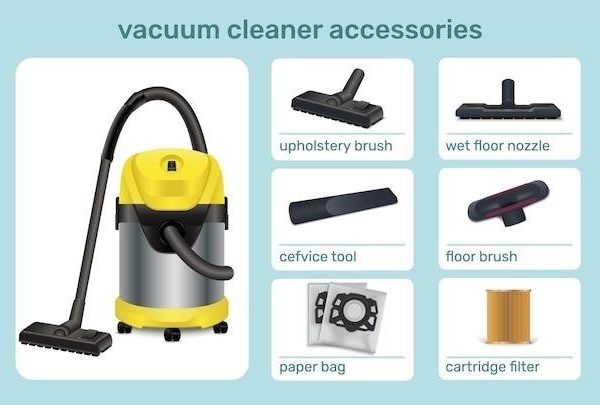How to Regenerate a Water Softener Manually
Manually regenerating your water softener is a simple process that can help ensure you have consistently soft water․ This guide will walk you through the steps, from understanding the regeneration cycle to troubleshooting common issues․
Understanding the Regeneration Process
Water softeners utilize a process called ion exchange to remove hardness minerals, primarily calcium and magnesium, from your water supply․ This process involves a resin bed within the softener that attracts and holds these minerals, preventing them from reaching your faucets and appliances․
However, the resin bed eventually becomes saturated with hardness minerals, requiring a regeneration cycle to restore its effectiveness․ This process involves flushing the resin bed with a concentrated salt solution, which displaces the hardness minerals and releases them down the drain․
The regeneration cycle typically involves four main stages⁚
- Backwash⁚ The water flow is reversed, loosening and suspending the resin beads for cleaning․
- Brine⁚ A concentrated salt solution is introduced to the resin bed, displacing the hardness minerals․
- Rinse⁚ The resin bed is flushed with clean water to remove the salt solution and any remaining hardness minerals․
- Slow Rinse⁚ The resin bed is rinsed with clean water at a slower rate to ensure the salt solution is fully removed and the resin bed is ready for softening water again․
Understanding these stages is crucial for manually regenerating your water softener, ensuring a smooth and efficient process․
Gathering Supplies
Before initiating the manual regeneration process, gather the necessary supplies to ensure a smooth and successful operation․ Here’s a checklist of essential items⁚
- Salt⁚ Ensure you have a sufficient supply of high-quality water softener salt, typically in the form of pellets or tablets․ The amount needed will depend on your softener’s capacity and frequency of regeneration․
- Bucket or Container⁚ A large bucket or container is required to hold the salt solution during the brine stage of the regeneration process․
- Measuring Cup⁚ A measuring cup is essential for accurately determining the amount of salt needed to create the correct concentration of brine solution․
- Funnel⁚ A funnel facilitates pouring the salt solution into the brine tank without spilling․
- Gloves⁚ Wear gloves to protect your hands from the salt solution, which can be irritating to the skin․
- Instructions Manual⁚ Refer to your water softener’s instruction manual for specific details about your model, including the salt type, amount, and regeneration cycle settings․
- Safety Glasses⁚ Protect your eyes from any potential splashes of the salt solution․
Having these supplies readily available will streamline the regeneration process and ensure you have everything you need to complete the task effectively․
Preparing for Regeneration
Before initiating the manual regeneration cycle, it’s crucial to prepare your water softener to ensure a smooth and successful process․ Here’s a step-by-step guide to get your softener ready⁚
- Check the Salt Level⁚ Inspect the salt tank to ensure there’s a sufficient amount of salt for the regeneration process․ If the salt level is low, add more salt to the tank, ensuring it’s the correct type recommended for your water softener․
- Locate the Bypass Valve⁚ Identify the bypass valve on your water softener, usually located near the brine tank․ This valve allows you to divert water flow around the softener during regeneration․
- Turn Off the Water Supply⁚ Locate the water supply valve leading to your water softener and shut it off completely․ This prevents water from flowing into the softener during regeneration․
- Turn Off the Water Heater⁚ If your water heater is connected to the water softener, turn it off to prevent hot water from entering the softener during regeneration․
- Flush the System⁚ Open a hot water faucet in your home to flush any remaining water out of the softener’s resin bed․ This helps remove any residual hardness minerals that may be present․
- Prepare the Brine Solution⁚ Using the measuring cup, add the recommended amount of salt to the bucket or container․ Then, fill the container with water, following the ratio specified in your softener’s instruction manual․
By following these preparation steps, you’ll ensure your water softener is ready for the manual regeneration process and prevent any potential issues or complications․
Initiating the Regeneration Cycle
Once you’ve prepared your water softener, you can begin the regeneration process․ This involves flushing the resin bed with a concentrated salt solution to remove accumulated hardness minerals․ Follow these steps to initiate the regeneration cycle⁚
- Open the Bypass Valve⁚ Turn the bypass valve handle to the “bypass” position, diverting water flow around the softener․ This prevents softened water from entering your home during the regeneration process․
- Pour Brine Solution⁚ Carefully pour the prepared brine solution into the brine tank․ The solution will dissolve the salt, creating a concentrated brine that will be used to regenerate the resin bed․
- Start the Regeneration⁚ Locate the regeneration control panel on your water softener․ Depending on your model, you may need to use a timer or manually initiate the regeneration process․ Follow the instructions provided in your water softener’s manual․
- Monitor the Regeneration⁚ Observe the regeneration cycle․ The process typically involves several stages, including a backwash phase, a brine phase, a rinse phase, and a final rinse․ Allow the regeneration cycle to complete as instructed in your manual․
- Close the Bypass Valve⁚ Once the regeneration cycle is complete, turn the bypass valve handle back to the “service” position, allowing softened water to flow back into your home․
- Turn on the Water Supply⁚ Open the water supply valve leading to your water softener․ This will allow water to flow through the softener and resume normal operation․
By following these steps carefully, you can initiate the regeneration process and ensure that your water softener continues to provide you with consistently soft water․
Monitoring the Regeneration Process
Monitoring the regeneration process is crucial to ensure it’s running smoothly and effectively․ While the exact steps and duration may vary based on your water softener model, here’s a general guideline⁚
- Observe the Regeneration Stages⁚ The regeneration cycle typically involves several distinct stages⁚ backwash, brine, rinse, and final rinse․ Pay attention to the flow of water, the sound of the system, and any visual cues that might indicate an issue․
- Check for Leaks⁚ Carefully inspect the water softener and surrounding areas for any signs of leaks․ Look for dripping water, puddles, or dampness around the brine tank, control valve, or other components․
- Monitor Water Flow⁚ The water flow should be consistent throughout the regeneration cycle․ If you notice a sudden decrease or stoppage in flow, it could indicate a blockage or other problem․
- Listen for Unusual Sounds⁚ Pay attention to any unusual noises coming from the water softener․ Grinding, rattling, or excessive gurgling could indicate mechanical issues requiring attention․
- Check the Salt Level⁚ As the regeneration cycle progresses, the salt level in the brine tank will gradually decrease․ Monitor the salt level and refill the tank as needed to ensure a consistent supply of brine solution․
By diligently monitoring the regeneration process, you can detect any potential problems early on and address them before they escalate, ensuring your water softener continues to perform optimally․
Completing the Regeneration
Once the regeneration cycle has run its course, you’ll need to ensure the system is properly reset and ready for normal operation․ Here’s how to complete the regeneration process⁚
- Wait for the Cycle to Finish⁚ Don’t interrupt the regeneration cycle prematurely․ Allow the system to complete all its stages, including the final rinse, before proceeding․
- Check the Water Hardness⁚ After the regeneration cycle is complete, test the water hardness to confirm it’s within the desired range․ If the hardness is still high, there might be an issue with the regeneration process or the softener itself․
- Verify Water Flow⁚ Ensure that the water flow is back to normal and there are no restrictions or leaks․
- Reset the Control Valve⁚ Some water softeners have a manual reset button on the control valve․ Press this button to reset the system and return it to normal operation․
- Monitor for Any Issues⁚ Keep an eye on the water softener and the water quality for a few days after the regeneration․ Look for any signs of problems, such as persistent hardness, leaks, or unusual noises․
- Document the Process⁚ Record the date and time of the manual regeneration․ This will help you track the frequency of manual regenerations and identify any potential patterns or issues․

By following these steps, you can ensure that your water softener is properly regenerated and ready to provide you with consistently soft water․
Troubleshooting Common Issues
Even with proper manual regeneration, you may encounter some issues with your water softener․ Knowing how to troubleshoot these problems can save you time and frustration․ Here are some common issues and their potential solutions⁚
- Hard Water After Regeneration⁚ If the water remains hard after regeneration, check the salt level in the brine tank․ If the salt is low, replenish it․ Another possibility is a malfunctioning control valve or a clogged resin bed, which may require professional attention․
- Leaking Water⁚ A leak could be due to a faulty valve, a cracked brine tank, or a loose connection․ Inspect all connections carefully and tighten any loose fittings․ If the leak persists, contact a professional plumber for assistance․
- Excessive Water Use During Regeneration⁚ If the regeneration cycle seems to use an unusually large amount of water, it could indicate a problem with the control valve or a leak in the system․ Check for any visible leaks and contact a technician if you can’t find the cause․
- Noisy Operation⁚ If your water softener makes loud noises during regeneration, it could be due to a problem with the control valve, the brine tank, or the resin bed․ Check for any signs of clogging or debris and contact a professional if necessary․
- Salt Bridging⁚ Salt bridging occurs when salt crystals clump together in the brine tank, preventing proper dissolution․ To prevent this, use a salt dissolving aid or stir the salt manually to break up the bridge․
Remember, if you’re unsure about the cause of a problem or feel uncomfortable troubleshooting it yourself, always consult a qualified technician․
Maintaining Your Water Softener
Regular maintenance is crucial for keeping your water softener in top condition and ensuring it continues to function effectively․ By following these simple steps, you can prolong the life of your softener and avoid costly repairs⁚
- Check the Salt Level Regularly⁚ The brine tank should always be filled with enough salt to support the regeneration process․ Aim to maintain a salt level of at least halfway full․
- Inspect the Brine Tank⁚ Periodically check the brine tank for any signs of corrosion or damage․ Clean any debris or sediment that may have accumulated inside․
- Flush the System⁚ Flush the water softener every few months to remove any built-up sediment or debris․ This helps to maintain optimal performance and prevent clogging․
- Check for Leaks⁚ Regularly inspect all connections and fittings for leaks․ Tighten any loose connections and address any leaks promptly to prevent water damage․
- Monitor Water Hardness⁚ Use a water hardness test kit to ensure the softener is effectively removing hardness minerals from your water․ If the water hardness is higher than expected, adjust the regeneration frequency or contact a professional․
By following these maintenance tips, you can ensure your water softener runs smoothly and delivers consistently soft water for years to come․



